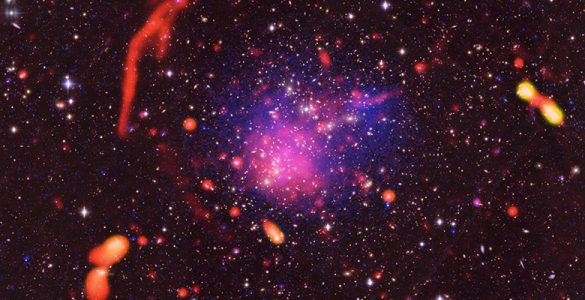Latest NRAO News
News is managed by NRAO News & Public Information. Questions about News? Have a story to share? Want to interview a scientist or create new media about our telescopes?

VLA observations have pointed to the most likely explanation for the phenomena that followed the violent collision of a pair of neutron stars in a galaxy 130 million light-years from Earth.

A giant collision of galaxy clusters has produced a spectacular panorama of shocks and energy produced by the violent encounters.

The VLA made the first detection of radio waves coming from the neutron-star collision that generated a ripple of gravitational waves. Radio telescopes will continue to reveal new facts about this phenomenon in the coming months.

Astronomers from a Canadian consortium will develop a data center to perform advanced processing of VLA Sky Survey data to augment its scientific value.

A new, all-sky survey uses the expanded capabilities of the VLA to produce a unique and valuable resource for astronomers of all specialties.

VLA observations of distant galaxy provide important new clues about how magnetic fields originate and influence the development of galaxies.

New evidence from the VLA suggests that a jet of material ejected by a young star may have triggered the formation of a second, younger star.

New VLA images are helping astronomers understand the origin of a giant radio-emitting structure in a cluster of galaxies.

Astronomers were surprised when the VLA revealed that a bright new object has appeared near the core of a famous galaxy. They think it’s a second supermassive black hole, indicating that the galaxy has merged with another in the past.

Astronomers produced a dramatic new image of the famous Crab Nebula by combining data from five different telescopes spanning the breadth of the electromagnetic spectrum.





